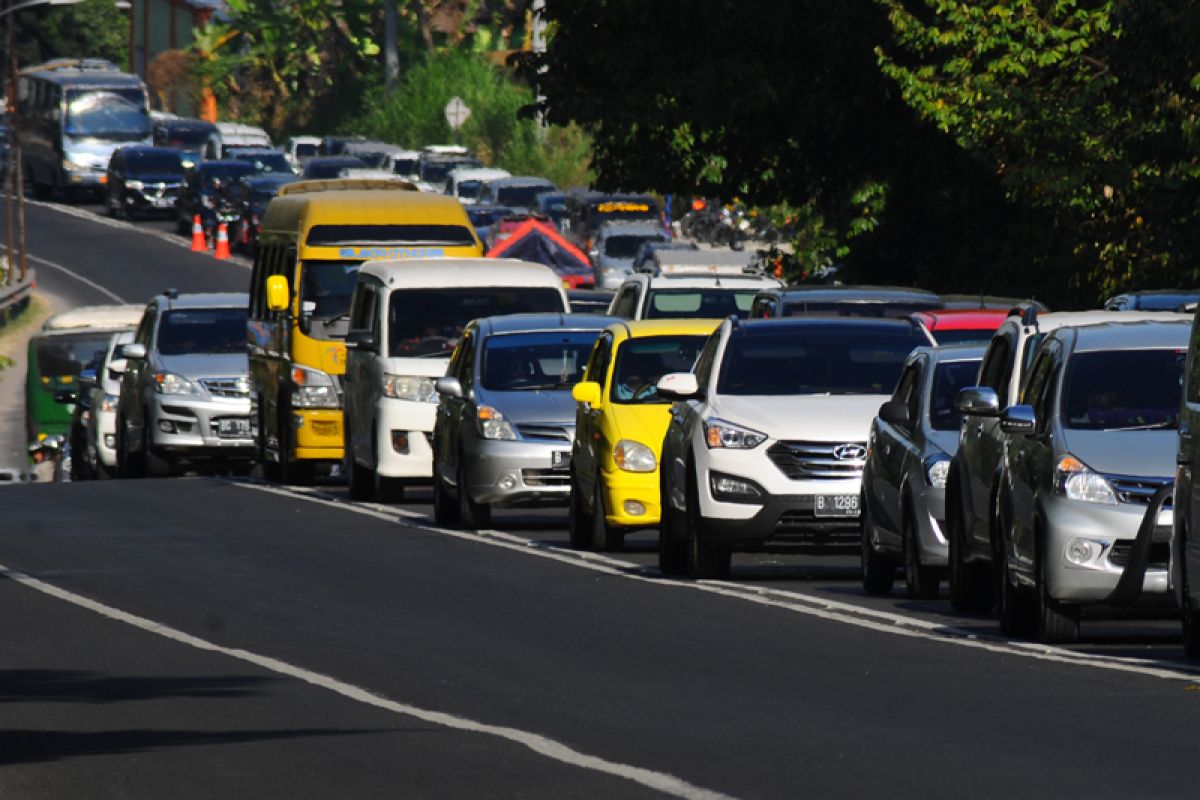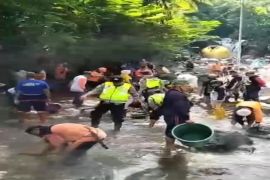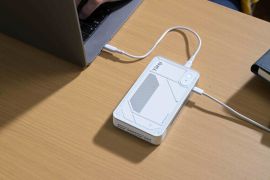It had earlier forecast that this year, over 19.5 million people will return home for reunion with families or friends and to celebrate the festivities after fasting for a month. The government had granted a collective leave or holidays from June 11 to June 20, 2018.
The collective Lebaran holidays will end next Wednesday on June 20, so it is expected that the the return flow of Lebaran travelers will peak in the next two days.
Transportation Minister Budi Karya Sumadi noted that all institutions are ready to face the peak of the return flow of Lebaran travelers that is expected to take place on Tuesday and Wednesday on June 19-20.
"The government has made sound preparations since the start of the return flow of travelers," Minister Sumadi remarked on Monday.
Based on aerial monitoring, the flow of traffic on several toll roads and non-toll roads is relatively smooth. There were a few traffic jams, but they were not significant.
To ensure that the return flow of Lebaran travelers is smooth, the Ministry of Transportation continues to urge drivers to use roads apart from toll roads.
"From the observation, several vehicles took the non-toll national roads, and this was able to reduce the density of traffic on toll roads," Minister Sumadi pointed out.
On Monday, the minister monitored the return flow of Eid or Lebaran 2018 travelers from aboard a helicopter at several locations.
"I want to review the condition of the return flow when travelers are entering the peak time, so that efforts can soon be made if there is a problem with traffic," Sumadi informed the press at the Halim Perdanakusuma Airport, Jakarta, Monday.
During the monitoring of return flow of travelers, the transportation minister was accompanied by Director General of Land Transport Budi Setiyadi and Managing Director of PT Jasa Marga Desi Arryani.
Several locations were reviewed, including toll and non-toll roads leading to Tegal, Pekalongan, Kali Kuto Bridge, and Cikopo in Java.
"We also conducted a ground-based review to observe the condition of toll and non-toll roads," the transportation minister revealed.
He noted that, in general, the return flow of travelers was smooth despite some points experiencing congestion.
The result of the monitoring of the homecoming flow was also positive in general, and some people were still heading home after Lebaran.
"Yesterday, I reviewed the Senen Railway Station, and there were still travelers going home aboard a train after Lebaran," he remarked.
The Lebaran D-Day was on Friday and Saturday.
From aerial monitoring, Antara reported that the Jakarta-Cikampek toll road to West Java was still crowded despite no traffic jam.
A congestion stretching for about 300 meters occurred before the Cikarut Toll Gate after which the flow of traffic was smooth again. Similarly, on the toll road to Jakarta, the flow of vehicular traffic was high, but no traffic jam was recorded.
Until June 13 or a day before the Lebaran festivities, some 646 thousand vehicles had departed from Jakarta for Eid or Lebaran in Java through the Cikampek Toll Road since eight days ago. The Jakarta-Cikampek Toll is the main gate for travelers from Jakarta heading to other parts of Java.
In the meantime, Merak Port is the main lane for travelers to Sumatra. Operational Manager of PT ASDP Indonesian Ferry of Merak Rudy Mahmudi stated on Thursday that a total of 835,651 passengers from Merak to Bakauheni were ferried during the exodus season from eight days to a day before Eid al-Fitr.
They are now returning, and the peak is expected to occur in the coming two days.
The Trans-Sumatra Highway (Jalinsum), Lampung section, has begun to record a busy return flow of Eid or Lebaran travelers two days after Eid or Lebaran on Monday, yet the traffic flow, in general, was still smooth.
Based on monitoring at several points on the Jalinsum in Lampung, vehicles in the return flow generally were heading to Lampung`s Bakauheni Harbor. From the Bakauheni ferry port, they will be transported to the Merak Port in Banten, Java, and will then continue the journey to their destinations on the island of Java.
Vehicles in the return flow still chiefly comprise private cars from Jakarta, Bandung, and Bogor. Returning travelers aboard motorcycles also began to crowd the Jalinsum in Lampung heading to Java Island. They used ferry services at the Bakauheni Port.
It is forecast that the number of travelers returning from Sumatra and heading to Java will begin to increase significantly three to four days after Eid al-Fitr, the collective 2018 Lebaran holidays will end thereafter.
Meanwhile, the Jalinsum in Bandaralpung is also crowded with vehicles heading to tourist attractions, such as Pasir Putih Panjang and Bandarlampung. Such conditions potentially cause congestion at the time of the reverse flow of Lebaran travelers, due to its location being adjacent to the Jalinsum.
Before Lebaran, the state-owned waterway transportation service PT ASDP for Merak had transported approximately 835,651 travelers, both pedestrians and those on vehicles.
They came from Java and crossed the Sunda Strait through the Merak Port to Bakauheni Port in Lampung. However, the number of travelers from Bakauheni to Merak was smaller.
Operational Manager of PT ASDP Indonesian Ferry of Merak Rudy Mahmudi noted on Thursday that the 835,651 passengers from Merak to Bakauheni was the recapitulation of travelers from eight days to a day before Eid al-Fitr.
With this figure, an increase of some 16.9 percent was observed in the number of passengers this year as compared to 714,973 travelers recorded during the same period in 2017.
The number of vehicles ferried during this year`s Lebaran season reached 167,946, or more than 154,885 vehicles recorded last year.
(A014/INE)
(T.A014/A/KR-BSR/A/H-YH)
Reporter: Andi Abdussalam
Editor: Heru Purwanto
Copyright © ANTARA 2018












